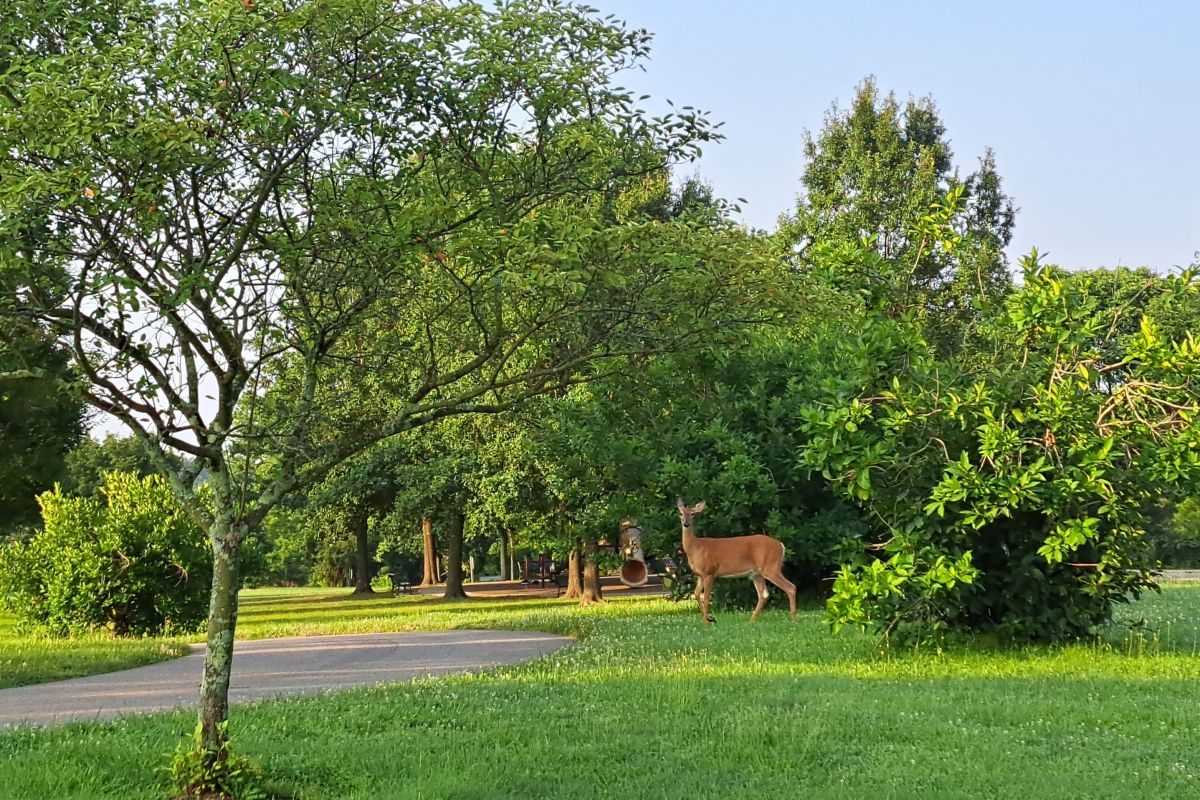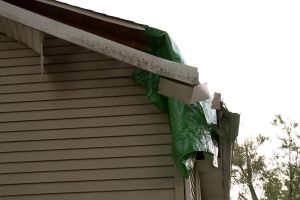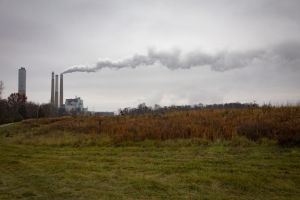
While Bloomington is not close to going over the natural carrying capacity, it has most likely reached or gone above the social carrying capacity. (Isabella Vesperini / WFIU-WTIU)
The City of Bloomington is considering doing a deer count after approving a deer feeding ban to decrease human-deer interaction and conflict. It would be the next step in a decade-long attempt to deal with the number of deer inside city limits.
But Tim Carter, biology professor and director of the field stations and environmental education center at Ball State, said a deer count will not help. He said it will be a waste of money and predicted it would be a failure.
He said since Indiana has not done a deer count, there is nothing to compare a local number to. While Bloomington is not close to going over the natural carrying capacity, it has most likely reached or gone above the social carrying capacity.
Read more: Bloomington could hold larger deer population
“There's too many [deer] by people's standards, not by environmental standards,” Carter said. “We're really more concerned about a social carrying capacity. That's measured in things like property damage, car collisions and other negative interactions.”
Carter said Bloomington’s abundance of plants and trees for deer as well as lack of predators allow deer to thrive. Moreover, since the city reintroduced deer 10 to 15 years earlier than most places around the country, it puts Bloomington 10 to 15 years ahead of the rest of the nation when it comes to addressing an overpopulation of deer.
“Bloomington is the leader when it comes to this,” Carter said. “They don’t have anyone else to follow…they'll probably spend a lot of money on something and it will be a dismal failure and the rest of the world will have to learn from what Bloomington figures out.”
Carter said solutions such as giving deer a type of birth control is very expensive and labor intensive. It is extremely difficult to catch enough deer and neuter them to impact the overall population. Catching and trapping a wild animal is so stressful and hard in itself that it could outright kill the deer before doing surgery on it.
“After you have your dog spayed or neutered, they come home, you get to watch them and take care of them for the next five days and give them medicine if they need it,” Carter said. “You spay a deer, and you let them go out and back out to nature, you don't get to touch them again…it's a little bit more risky, a little bit more dangerous.”
Keith Clay, professor and chair of the department of ecology and evolutionary biology at Tulane University in New Orleans and distinguished professor of biology emeritus at IU, was on the Bloomington Deer Task Force in 2012.
Clay said it is difficult to do a deer count. Doing a flyover has been discussed, but it is extremely expensive and not as accurate.
“You'd have to somehow catch them and tag them, or spray paint them and that's traumatic,” Clay said. “Some deer might die or be totally harmed by being captured and handled.”
He said that since deer do not have any natural predators except for the occasional coyote, their population is currently controlled by food supply and legal hunting.
“If the deer have eaten everything, they're basically taking the food supply away from the rabbits,” Keith said. “Indirectly, they're harming them because they're consuming most of the resources available; everything the deer eats is not available for other animals to eat.”
Enforcing a deer feeding ban will reduce deer access to public food supply, which could in turn decrease their population. Deer have been having twins, a rare occurrence. This could be because they are more well fed by humans, so the ban may reduce the number of baby deer born.
Read more: Bloomington City Council approves deer feeding ban
Clay did a study where he compared the effects of the presence of deer in an unfenced area of a forest preserve compared to an 8-foot-tall exclosure without deer. He and his team found that deer outside the exclosures ate many tree and plant seedlings; this can result delayed plant and tree production, reduced reproductive potential, population decline and extinction.
“The soil inside the exclosures was less compacted…the soil is softer and more malleable,” Clay said. “The roots of trees and other plants can grow easier.”
The results also showed that deer suppressed the number of invasive shrubs in unfenced areas, but there was less vegetation density.
Clay recommends people plant things deer will not eat. People are allowed to protect their gardens with a fence that is up to 12 feet tall. He said a deer can hurt a dog or human if protecting a fawn.
Steve Cotter, natural resources manager of the City of Bloomington, said the city worked with firm White Buffalo Inc. to host its first successful sharpshooting session at the Griffy Lake Nature Preserve in December 2017, killing 62 deer. There were minor positive impacts.
“We think that the only way that we're going to be able to maintain the plant biodiversity in the preserve is by controlling the deer population,” Cotter said.
Cotter said he works with White Buffalo Inc. to recruit and train hunters to kill deer at yearly community-based deer hunts instead. The city did its first hunt in 2019 and killed 26 deer over the course of three weekends. Since the city has begun to hunt deer in the preserve, the city has found that plant heights have increased.
“If the plants aren't big enough, then they can't reproduce,” Cotter said. “We're worried that if we don't control the deer population, we will lose native plants from the preserve.”
Cotter said hunts are restricted to the preserve; no hunting is allowed within city limits. He also thinks doing a deer count is not worth the cost.
“It's hard to find them [deer]; they're able to hide under bushes and are very good at concealing themselves,” Cotter said. “We wanted to spend the limited money that we had to solve the problem as opposed to just documenting the problem.”
Virgil Sauder, director of animal care and control at the City of Bloomington, said he thinks a deer feeding ban will discourage deer from coming into town to eat people’s plants. If deer are not in the city as much, he hopes the number of vehicle collisions with deer will also decrease.
“If you have a wild animal that is becoming habituated with people and used to being around people and overly friendly, often the recommendation for that animal is to be euthanized,” Sauder said. “That's something we want to avoid.”
Sauder said the goal of the ban is not to decrease the population, but to put deer back where they belong in nature. Having too many deer congregated in one area can spread diseases between deer. While deer-to-human disease transmission is not common, deer can still spread ticks and diseases, like Lyme disease, to people if they get too close.
Sauder said anyone seeing a deer should either put distance between themselves and the deer or continue moving to avoid a negative response, especially if the deer is protecting its fawns.
“It's looking at kind of reverting them back to what their natural habits are,” Sauder said. “It’s helping to start that discussion with everybody that this is a wild animal, it's not a pet that we keep outside.
Ball State’s Carter said he does not think a feeding ban will solve the problem completely.
“Whatever their solution, it's going to cost money, it's going to cost resources,” Carter said. “The city and its people have to be ready to actually allocate those kinds of resources… people are looking for a free way to take care of the problem, and that just simply doesn't exist.”











